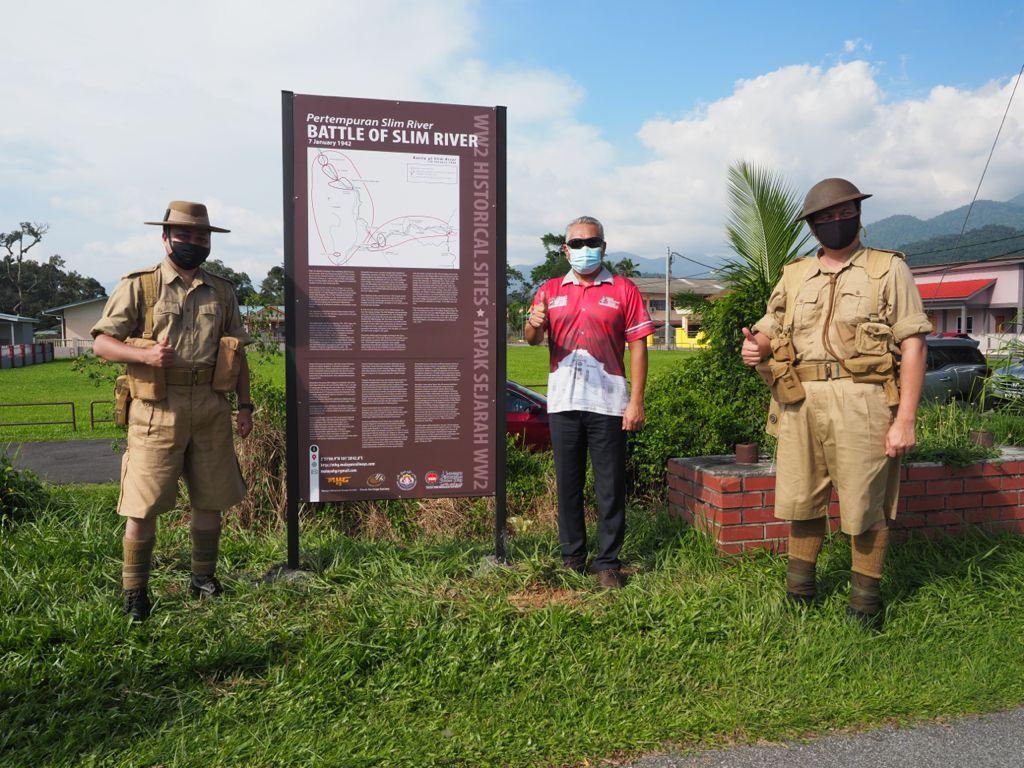World War II relics abandoned, rented out for business
Historical sites which bore witness to armed conflict are peppered throughout the peninsula but may soon disappear if efforts are not made to preserve them.
Just In
Throughout Peninsula Malaysia lie hundreds of sites which once bore witness to the events of World War II.
Pantai Sabak in Kota Bharu, Kelantan, for example, was the site of the first World War II battle in the Pacific, when Japanese troops landed shortly before the attack on Pearl Harbour on Dec 7, 2941.
But today, nearly eight decades later, such events have been relegated to history books and the memories of those who lived through those times.
The lack of recognition for these sites has spurred a group of activists to ensure that they are not lost from even those.
The Malaya Historical Group (MHG) works to uncover, collect and preserve artefacts and the historical sites of World War II in the peninsula, known then as Malaya.
MHG chairman Shaharom Ahmad said there had been many sites of conflict between Japan and the Commonwealth forces – but not many survive.
In the north, for example, conflict took place in Jitra, Kodiang and Changlun, as well as in several locations near the airport in Kepala Batas.
In Perak, meanwhile, Kuala Kangsar, Teluk Intan, Chemor and Kampar all bore witness to armed conflict.

“But there’s not much now that can be preserved,” Shaharom told MalaysiaNow.
“This is why we are fighting to save the site in Green Ridge, Kampar in Perak. Much of it remains in its original form, like the fortress and the defensive trenches.”
Nearby also lies Thompson Ridge, a battle site which is now home to a residential development.
“The historical traces there are all gone,” Shaharom said. “Only Green Ridge remains.”
The Japanese landing site of Pantai Sabak, meanwhile, along with the British forts in the area, were lost to coastal erosion
Shaharom said many sites linked to World War II are now located in privately owned areas or areas owned by corporations, which complicates preservation efforts.
Malaya, as it was known then, was invaded by Japanese troops under the command of General Tomoyuki Yamashita, who wrested it from the hands of the British in just a few months.
Britain’s final defeat in Singapore was considered the most humiliating of the British empire.
Throughout their campaign, the Japanese soldiers had faced resistance from the Australian, Indian and Malayan military.
Historical sites rented out
Shaharom spoke of barracks in Parit Sulong in Batu Pahat, Johor, which the Japanese troops had used to detain and torture prisoners of war.
These barracks eventually crumbled with the passage of time but were restored and handed over to the district council which rented them out to business owners.

“They should have been preserved and made into a museum,” he said. “We fought for those barracks to be preserved as they bore traces of the Japanese occupation.
“Because of this, many locals accused us of trying to steal their rice bowl,” he said, adding that permission had been given by the Australia War Memorial for its artefacts to be displayed at such a gallery.
Until today, though, the group’s efforts to turn the barracks into a gallery or museum have borne no fruit.
Using its own funds, MHG also puts up signboards at important historical sites to remind people of the significance of those spots.
Its members are also frequently asked to bring historians, veterans and diplomats from the UK, Britain and Australia to these sites.
During such visits, MHG members put on the uniforms of British soldiers as a way to educate the people and to remember the past.
This has become part of the group’s trademark.
But it has also earned it the ire of those who say that its members glorify colonial history above their own.
“It’s difficult for them to accept things related to the history of World War II,” Shaharom said. “But we cannot blame them because of the hardships during that time.
“We don’t glorify the colonisers,” he added. “Our efforts are to educate the people about important events so that we appreciate and learn from them.
“It wasn’t easy for us to gain independence. We should realise the sufferings of war so that history doesn’t repeat itself.”
Subscribe to our newsletter
To be updated with all the latest news and analyses daily.
Most Read
No articles found.
